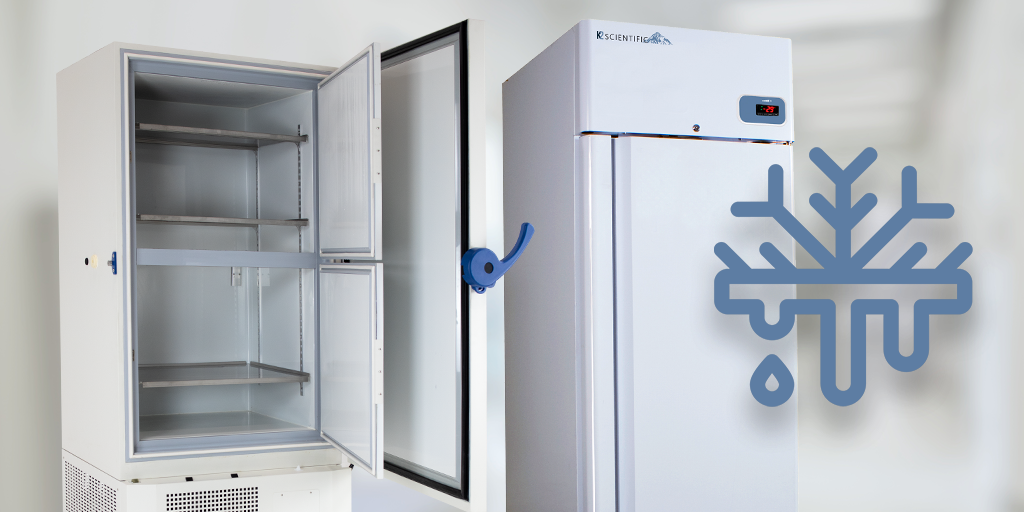Defrost cycles play a vital role in maintaining medical refrigerators and freezers' optimal performance and temperature stability. Understanding how defrost cycles work and their importance is crucial for healthcare facilities, pharmacies, and laboratories that store temperature-sensitive medications, vaccines, and specimens. In this comprehensive blog post, we will explore everything you need to know about defrost cycles on your medical fridge and freezer, including their purpose, types, frequency, and best practices. Equipping yourself with this knowledge will help ensure the safe storage and integrity of critical medical supplies.
1. The Purpose of Defrost Cycles
Defrost cycles serve two primary purposes in medical refrigeration:
Ice and Frost Removal:
Defrost cycles remove ice and frost buildup from the evaporator coils and other surfaces inside the refrigerator or freezer. Accumulated ice can hinder proper airflow and cooling, compromising the unit's effectiveness.
Temperature Control and Stability:
By eliminating ice accumulation, defrost cycles help maintain consistent temperatures inside the medical fridge or freezer. This is crucial for preserving the integrity and efficacy of medications, vaccines, and other temperature-sensitive products.
2. Types of Defrost Cycles
Medical refrigerators and freezers employ different types of defrost cycles:
Manual Defrost:
Manual defrost refrigerators require periodic defrosting done manually by the user. This process involves turning off the refrigerator, removing the contents, and allowing the ice and frost to melt naturally. Once the ice has melted, the refrigerator is cleaned and restarted. Manual defrosting offers simplicity, as it does not rely on complex control systems or sensors. However, it requires regular monitoring, manual intervention, and temporary relocation of payload.
Smart Hot Gas Defrost:
Smart hot gas defrost is an automated method that utilizes advanced control systems and sensors. These systems continuously monitor the temperature and ice buildup on the evaporator coils. When necessary, the system initiates a defrost cycle by diverting hot gas from the compressor to melt the ice and frost. Smart hot gas defrost ensures defrosting occurs only when needed, optimizing energy efficiency and minimizing ice accumulation. This method reduces the need for manual intervention and provides more precise control over defrost cycles.
3. Defrost Cycle Frequency
The defrost cycle frequency depends on factors such as ambient humidity, door openings, and the amount of product loaded into the fridge or freezer. Typically, medical refrigerators and freezers with automated defrost cycles perform every few hours to a few days, depending on the unit's design and usage conditions. However, if you need to defrost a unit manually, it should be done at least every six months. It is essential to follow the manufacturer's guidelines regarding defrost cycle frequency.
4. Best Practices for Defrost Cycles
To ensure effective defrosting and optimal performance of your medical fridge and freezer, consider these best practices:
- Regular Monitoring: Monitor the ice buildup on the evaporator coils and observe any changes in temperature or cooling performance. Excessive ice accumulation or irregularities may indicate a problem with the defrost cycle.
- Follow Manufacturer's Instructions: Adhere to the manufacturer's recommendations for defrost cycle settings, frequency, and maintenance. Consult the user manual or contact the manufacturer for specific guidelines.
- Proper Loading and Airflow: Arrange products in a way that promotes proper airflow inside the unit. Avoid blocking air vents or overloading the shelves, as this can obstruct airflow and hinder the effectiveness of the defrost cycles.
- Temperature Monitoring: Regularly monitor and record the internal temperature of your medical fridge and freezer to ensure it remains within the recommended range.
K2 Scientific offers manual and smart hot gas defrost cycles on their High Performance and Value Performance units. The manual defrost option provides a cost-effective solution with simple operation, requiring periodic user intervention for defrosting. On the other hand, the smart hot gas defrost cycles available in their High-Performance units utilize advanced control systems and sensors to automate the defrosting process. These intelligent systems optimize energy usage, minimize ice buildup, and precisely control defrost cycles. Whether you prioritize cost efficiency or advanced automation, K2 Scientific has the right defrosting solution to suit your needs.
